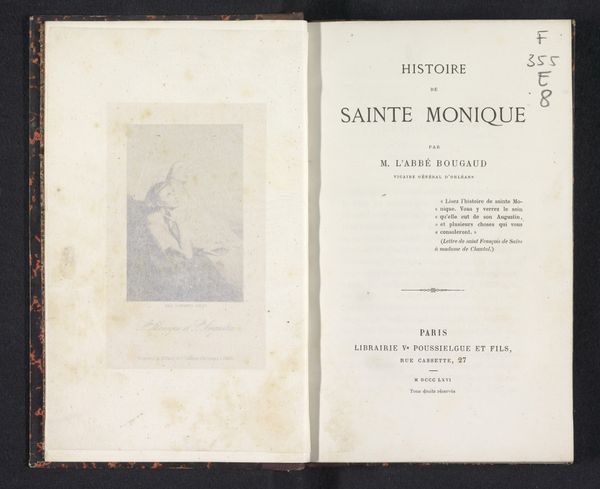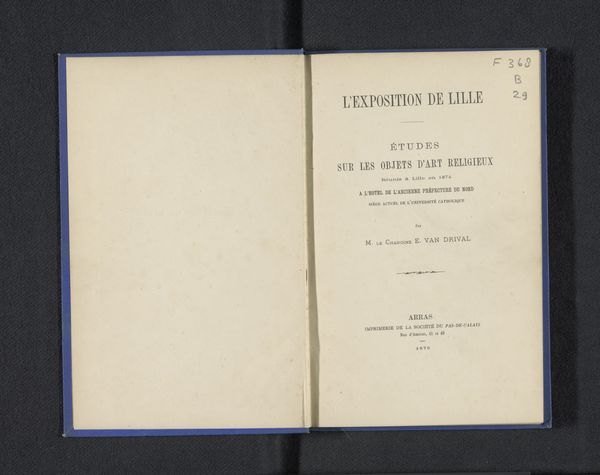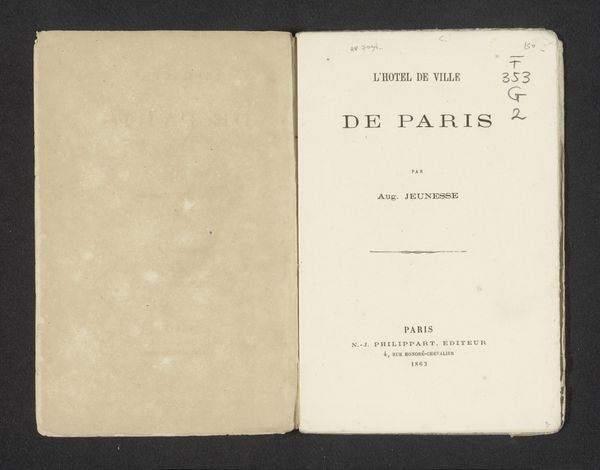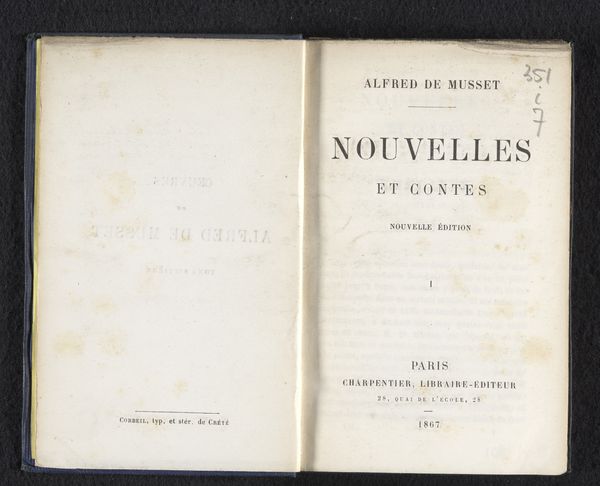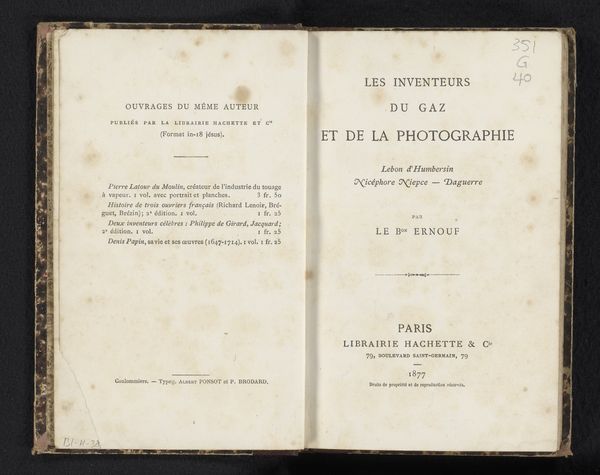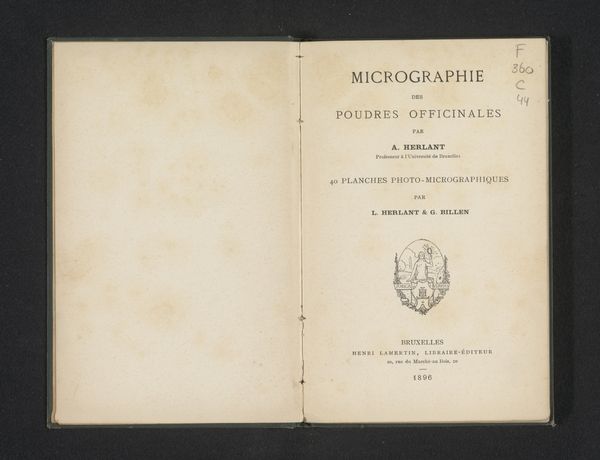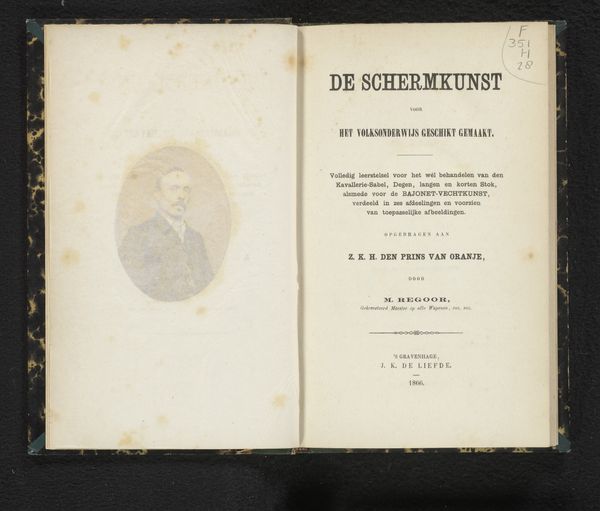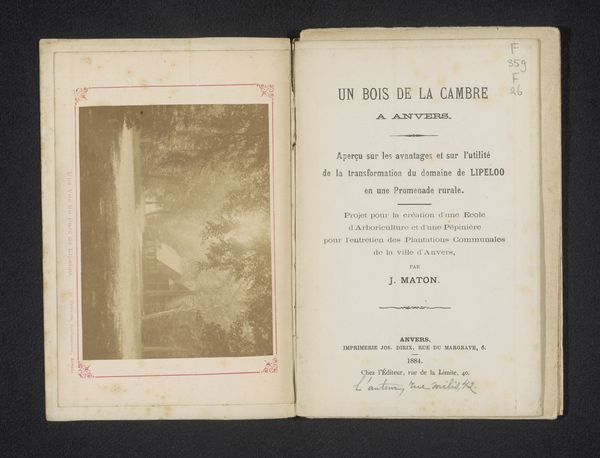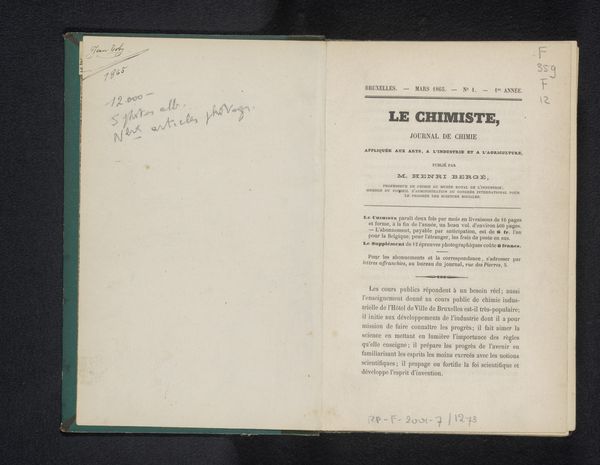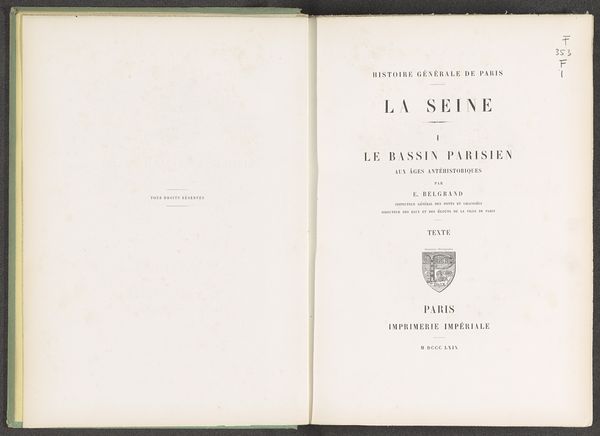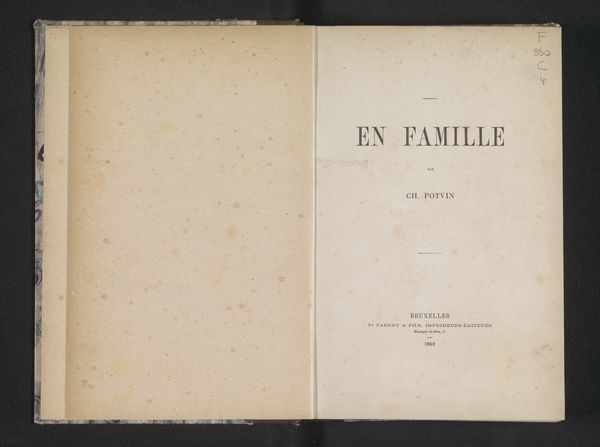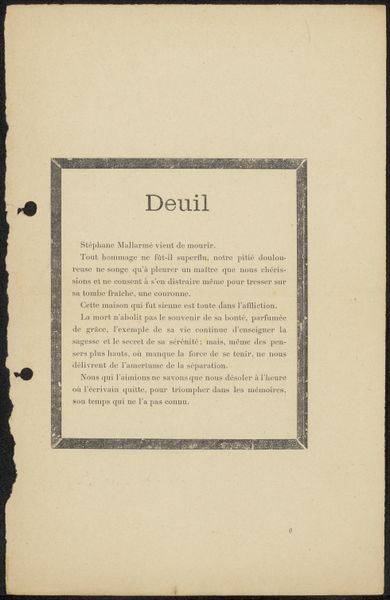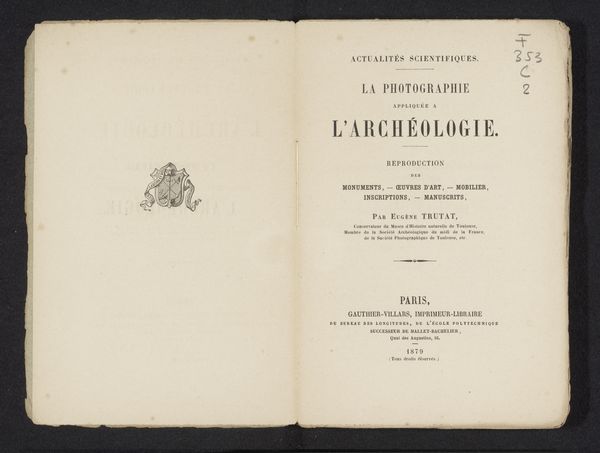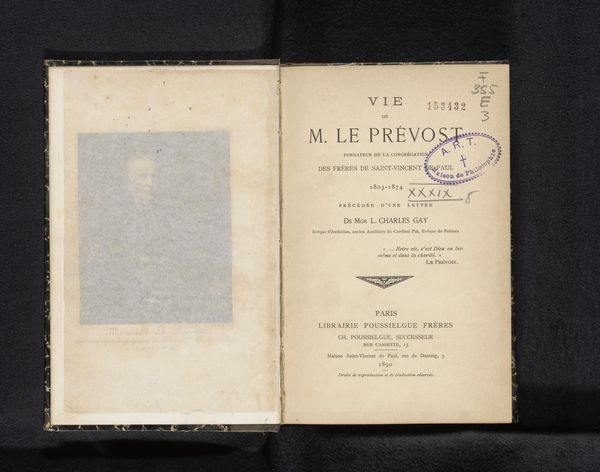
print, photography
#
aged paper
#
still-life-photography
#
pictorialism
# print
#
book
#
photography
Dimensions: height 50 mm, width 50 mm
Copyright: Rijks Museum: Open Domain
Editor: This is a photograph of a book titled "Le Mont Saint-Michel," dated before 1897, by Ernest Goethals. The book is open, displaying the title page and what looks like an inscription on the left. The photographic style is quite soft and gives an ethereal feeling. What strikes me is how this photograph documents not only Mont Saint-Michel, but also its representation and dissemination at the time. What do you see in this piece? Curator: Indeed, it's a fascinating document of a document! We must consider how such imagery functions within broader social and institutional contexts. The choice of pictorialism, for example, wasn't merely aesthetic. It lent a certain legitimacy, perhaps even an air of timelessness, to the subject. Why do you think Goethals chose to present it in book form? Editor: Well, making it a book allows for wider distribution, and positions Mont Saint-Michel as a cultural object worthy of study. And is it meant to highlight a specific perception of the site at that time? Curator: Precisely. Books play a crucial role in shaping collective memory and national identity. This book likely reinforced particular narratives surrounding Mont Saint-Michel, perhaps emphasizing its historical significance, religious importance, or even its role in French national identity. Look at the phrase "Au péril de la mer"—"At the peril of the sea." How does this romantic framing contribute to the overall narrative? Editor: It certainly evokes a sense of drama and the enduring battle between man and nature, placing the monument at the intersection of both. It highlights Mont Saint-Michel's resilience through time. I hadn't thought of the power dynamics at play in image dissemination! Curator: Exactly. And understanding these dynamics – how images are created, circulated, and received – helps us unravel the complex relationship between art, power, and society. What does the print say at the bottom of the right page? Editor: Ah, right, “I. Goemaere, Imprimeur du Roi" - printer to the king. That speaks volumes, too, adding another layer of official endorsement to the story being told. Curator: Absolutely. It's these small details that illuminate the broader socio-political forces shaping the art we see, and this has been revealing, too! Editor: Yes, thank you. I definitely appreciate thinking about how museums, publishers, and institutions impact the meaning of art in our society!
Comments
No comments
Be the first to comment and join the conversation on the ultimate creative platform.
